Picking a Breast Pump
Okay, gals, we need to talk about getting the right breast pump.
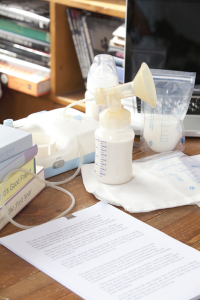
If you are planning on BF’ing, you will most definitely need a pump — even if it’s just a manual one. Yes, even if you are exclusively breastfeeding — and you won’t allow a single foul bottle near your precious baby’s mouth (*rolls eyes*) — you still need a pump. How else will you relieve engorgement or stimulate a weak supply?
*Before you spend your own money on any of this:
Since 2013, the Affordable Care Act (a.k.a. Obamacare) requires health insurance providers to cover pumps, lactation consulting, and other related equipment at no cost: get the lowdown here. Every plan is different, so you need to call your insurance company to find out what your options are. It’s best to make this phone call earlier rather than later – sometime in the second or third trimester.
Furthermore, if you want to purchase a type of pump that isn’t covered, know you can use your HSA (or FSA) account.
You’ve got three options, mummy mumskins:
- Rent a hospital-grade device
- Get an electric pump (read: get through your insurance)
- Use a manual/hand breast pump
1. Rent a Hospital-grade Device
Given the changes in insurance and the availability of at-home double electric pumps these days, renting a hospital pump is not as popular as it once was — but it’s still an option and some may actually prefer it. If you’re interested, it would probably be a Medela Symphony Plus (or maybe an Ameda Platinum) — both of which are no-frills, double-electric commercial-grade behemoths that are designed to be used by multiple users, so you will have to buy your own collection kit.

These pumps are available to rent either from hospitals or other third-party retailers, which used to be quite annoying, but has become easier with digital/online technology. For the Symphony Plus, you can search for locations on Medela’s website or click here to rent and have the pump shipped directly to you.
Spectra also offers a hospital-grade multi-user pump; it’s available for rent through “DMEs” — companies that rent out durable medical equipment. The “S3 Pro” is similar in design and form to the single-user Spectra pumps, but specifically engineered with higher settings. If you’ve used a Spectra pump before and are looking for a hospital-grade rental, this might be something to check out.
If you’re given the option of renting a hospital-grade pump (vs. buying a “regular” pump), there are a few things to keep in mind…
First, hospital-grade devices are hands-down more powerful than “at-home” units (yes, even the ones that say they’re “hospital-strength”) and are better/more efficient at pumping milk, which in turn means they’ll do the best job of stimulating your supply. Thus, renting a pump is a great option for mothers with specific needs, such as moms of preemies (or sick babies in the NICU), moms of multiples, or those who have a weak supply. Many a working mother also opts for these powerhouses to help them maximize their stash (yes, even if you WFH, this can be a big help).
Another plus with renting is that this is a much more eco-friendly way to go. Instead of using a single-user pump and then having to throw it out (at least, this is what the companies advise), multi-user rental machines amount to much less waste. Spectra’s reps are even excited about the prospect of placing the S3 in “lactation centers” set up across public areas and workplaces, where women could bring their own parts, pump, and depart.
Legislation is in the works in some states for this kind of arrangement, and it would be a very exciting development indeed. (Not to mention, this would also help ensure that more women have access to state-of-the-art breast pumps.) Anyway — the green factor is a definite “pro” in the rental category.

The big downside, though, is that unlike some of the higher-end “at-home” pumps (below), commercial-grade devices are HUGE, heavy, and can be very intrusive and loud (though the newer ones are surprisingly quiet). For comparison, if at-home pumps are crop dusters, commercial-grade pumps are fighter jets. They lend to neither discretion nor portability.
And, if you’re paying out-of-pocket (you’ve only been offered an outdated pump and it isn’t getting the job done, for example…), renting a pump can be pretty costly. Although rates vary across locations, the average price is at least $50/month. For example, CHOP – one of the foremost hospitals in the country – has rates of $75/month or $200/3 months for a Symphony. At retailers, prices are similar (if not more costly). Plus you need to spend ~$50 on some of your own parts (bottles, shields, etc.) Obviously, the longer you need it, the more it will cost.
*If you go this route — make sure to inquire about what your insurance covers before handing over your credit card, friends.* Another tip, if you’re interested in checking out a rental: ask if you can try one out at the hospital right after birth, where your lactation consultant can help you out and you can see how you like it.
Like we said — renting is an option, but if you plan on breastfeeding and know it, it’s more likely worth it to (also) get your own double electric pump through your insurance company. This brings us to option two:
2. Get an Electric Pump Through Your Insurance Company (or buy one on your own…):
In their first incarnation, breast pumps were clunky, loud, slow, inconvenient, and intrusive… if not downright painful. And they pretty much stayed that way… for decades.

The first breast pump was actually invented in the 1850s (!), and the design was pretty similar to every pump prior to the 1980s, go figure (it was modeled off an actual milk machine for dairy cows!).
By the way, guess who designed all the milk-making contraptions for all those decades? Men.

Yes, even up until just about twenty years ago, the absolute most innovative thing on the market was… wait for it… a double electric breast pump! Medela developed the first at-home unit in 1991, which revolutionized the world of pumping because it allowed moms to continue breastfeeding for longer (especially working moms).
In the past few years, we’ve found ourselves in the midst of another technological turning point — thanks to a huge increase in demand, engineering developments, and a surge in breastfeeding rates over the last couple decades, mothers who opt to pump now have some new options available to them. In fact, choosing a breast pump has become a tough decision, where once there was no choice to be made.
Now — none of this is to say that pumping today is a picnic. It’s not. Just because newer pumps offer more discretion and portability doesn’t make them actually truly discreet or portable.
“If men could breastfeed, surely the breast pump would be as elegant as an iPhone and quiet as a Prius by now.”
Courtney Martin, NYT
The way we see it, electric home breast pumps fall into one of two broad categories:
- “traditional” (in the functional sense); or
- “niche” (as in avant-garde and $$$$);
We’ll elaborate slightly on each below, but the long and short of these distinctions (and trying decide what might suit you best) is that a traditional pump is probably going to be the best (and primary) pump for most women. *A point: among these options, there is no single best breast pump for everyone — much like your favorite jeans, everyone has a different body and different personal preferences.
The “niche” pumps, including wearable options like the Elvie or the Willow, are marketed as lifestyle products. They may work well for some women — and we appreciate that these developers are pushing the envelope when it comes to pumping tech — but in reality we don’t see these as universally superior upgrades. They have limits: they can be finicky, for one thing, and they tend to come with a steep learning curve. Not to mention that they may simply not be as efficient or as effective at achieving their main goal: extracting enough milk.
In other words — unless there is some particular feature that is *super important to you (wearability, say, or smart data tracking — which some traditional pumps also offer), we think you’re better off shopping for a traditional (and potentially more cumbersome, yes) type of pump.
Okay, mama — here we go (are you ready??) — here are our favorite electric pumps, in order of price, lowest to highest…
Note that these exact pumps may not be available through your insurance company’s DME (durable medical equipment provider) — but they may offer a watered-down version (i.e., it’s the same pump housing, but doesn’t come with a bag, or they offer the S2 but not the S1). Often, you can opt to cover the difference between the watered-down version and the more deluxe version, if you want to. This is usually worth it, especially if you are a working mom. *And don’t forget! You can use your FSA or HSA dollars. (Get the skinny on: Breast Pumps Through Your Insurance.)
Traditional Pumps
Jump ahead to learn about our picks:
- Spectra S1/S2 — Editor’s Choice
- Ameda Mya
- Baby Buddha — Most Efficient
- Medela Freestyle Flex
- Medela Sonata — Most Comfortable
RIP Medela Pump-in-Style Advanced
For as long as we’ve been covering pumps, we’ve always recommended the Medela Pump in Style Advanced (the “PISA”) — we loved it for being a tried-and-true workhorse that had the added benefit of being widely available through insurance.
But in 2020 Medela “updated” the PISA to the Pump in Style with MaxFlow. While the newer version has a closed system, in nearly every other way it is far from an upgrade: it has worse suction, finicky technology (malfunctions often), a loud volume, and simply isn’t very effective. User reviews of the MaxFlow Amazon are scathing: “the worst pump ever,” “disappointed,” “total garbage,” “doesn’t last long,” “this is a nightmare,” “11.8% more milk my a**,” and “I hate this pump” (just to name a few).
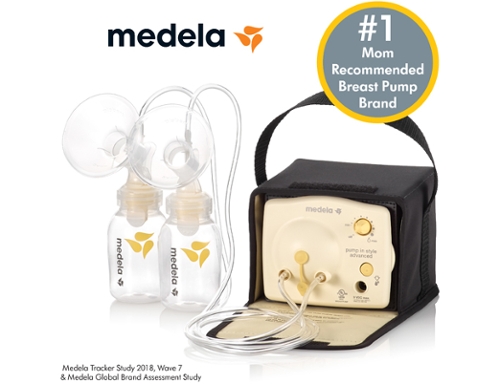
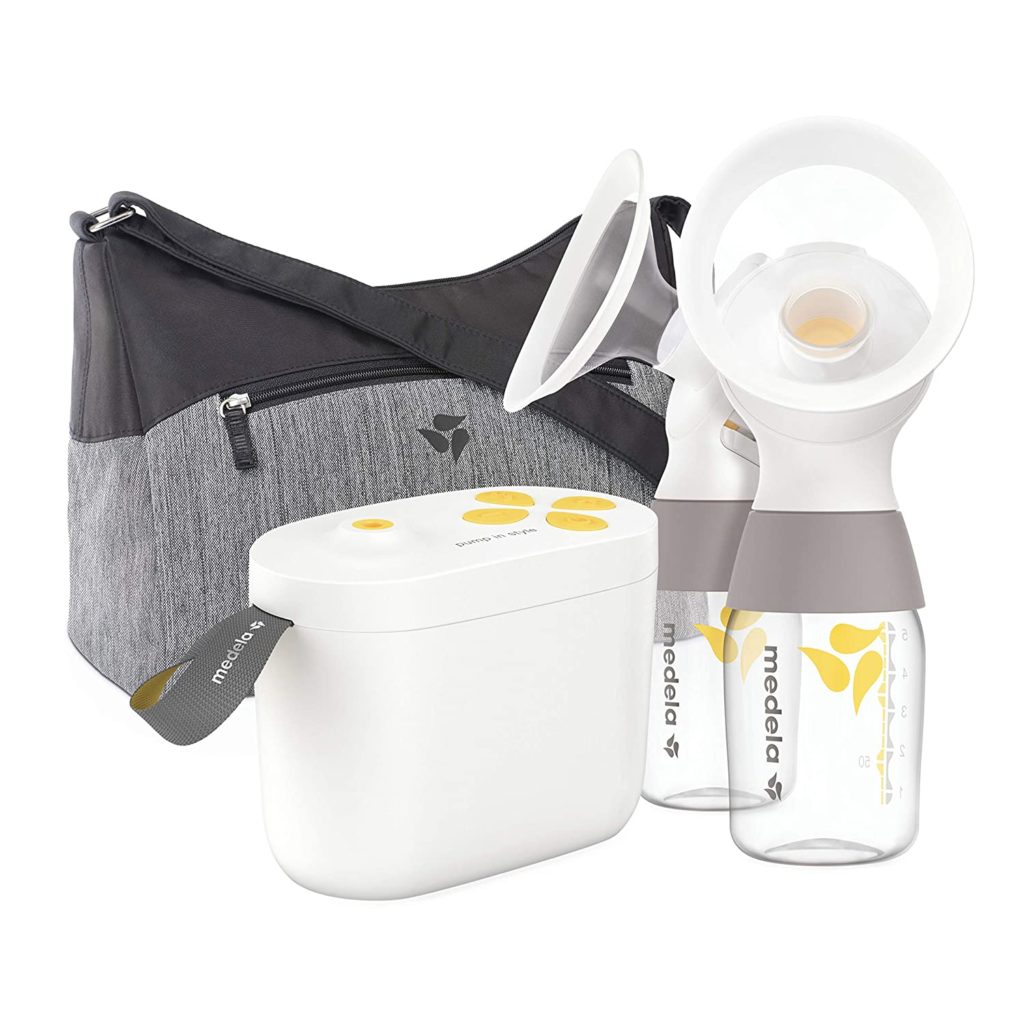
Some insurance co’s are still offering the original PISA, and if you can get the *original PISA (left, above), we still totally love and recommend it! It doesn’t have a ton of fancy bells and whistles, but it will serve you well. Please double check what you’re receiving, though, because again, we do not recommend the new Pump in Style MaxFlow.
Spectra S1 Plus/Spectra S2 Plus ~$216/$159 — Editor’s Choice
A bit newer on the scene is the Spectra (the S1 and S2). We’ve watched this brand closely and have been very impressed. Dethroning the Medela was no easy feat, and Spectra is continuing to convert many former loyal Medela devotees.
The S2 (pink, below) is a double/single pump and the S1 (blue, at bottom) is the same, but it comes with a built-in rechargeable battery — meaning you don’t need to plug your pump in when you’re using it. Other than the color, this battery feature is the ONLY difference between the S1 and the S2. If the ability to pump without immediate access to a power source is key for you, then you probably want to opt for the S1.
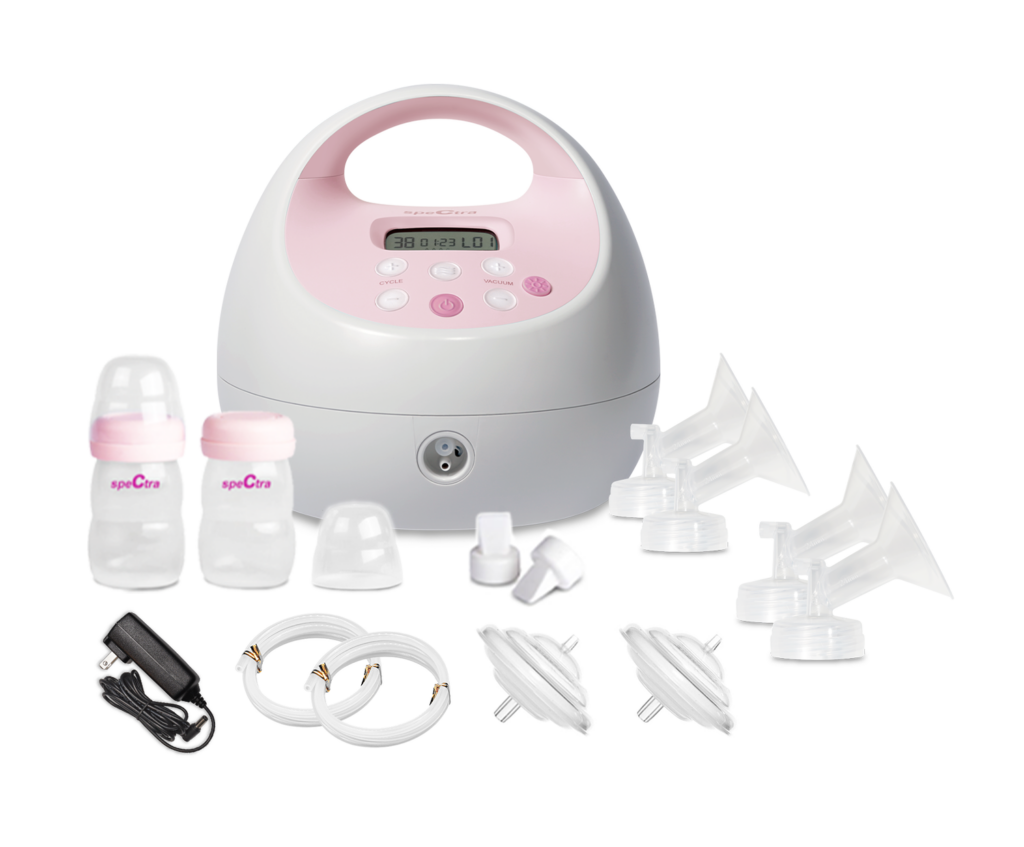

The S1 and S2 are marketed as hospital-strength pumps, but for everyday, at-home use. (Spectra now also makes a hospital-grade/multi-user pump (the S3 Pro) which you can rent.)
Let’s talk about the system first – shared by all of the Spectra pumps. It’s a lightweight, “closed system” (meaning it prevents milk from flowing back into the tubing or housing, aka backflow protection) that’s easy to take apart and clean. Moms rave about the nightlight, the timer function, and the low noise level — it’s super quiet (a huge perk for middle-of-the-night pumping).
The Spectra offers customizable settings and adjustable cycles, which is important because not all breasts (or pain/discomfort tolerances) are created equal.
One of the best things about the S1 and S2 is that they simulate a nursing baby (as the company says, these pumps “suckle” — not “suck”), which aids in let-down and speeds up the whole pumping process. Some women (including our very own Charlene) even believe it has helped increase their supply.
The S1 and S2 are known for gentle, comfortable, pain-free pumping (i.e., comfortable flanges) — and we all love that!
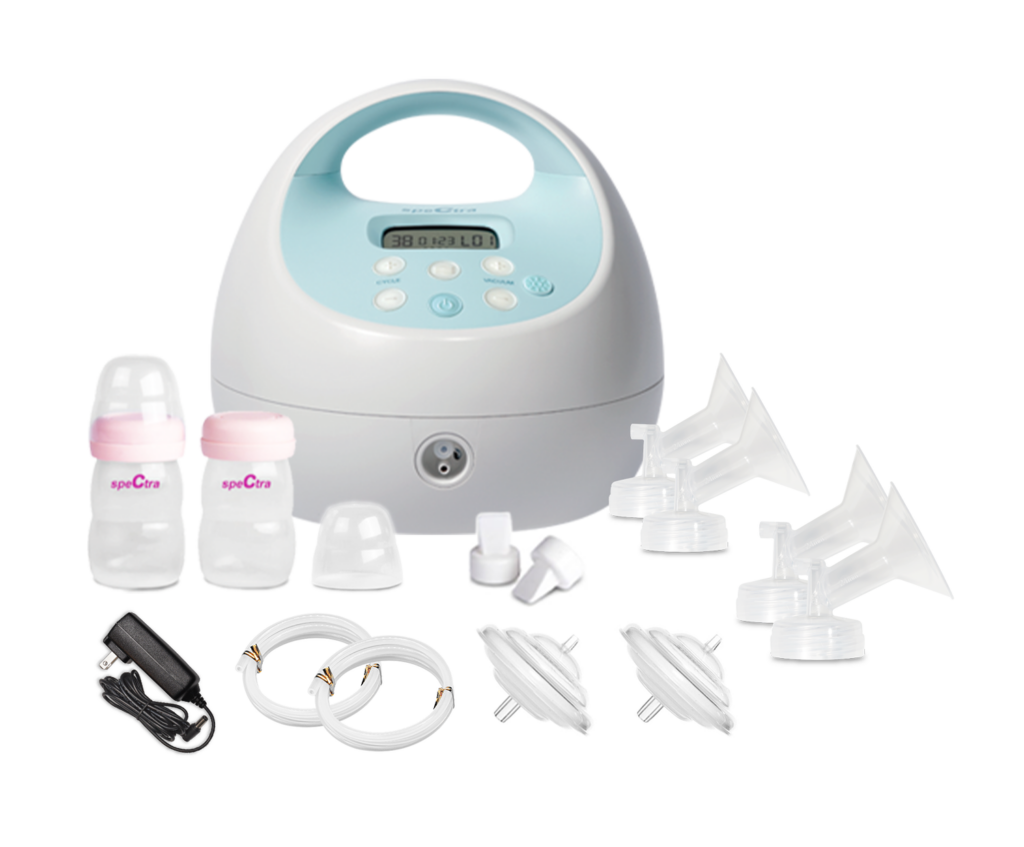

The downside to the Spectra is that the accessories and bottles it comes with are not the greatest. The system comes with two sets of 2 flanges (24 & 28mm), tubing and valves, etc., as well as two wide neck bottles. Neither model comes with a bag/tote. Lastly, the S1 and S2 are not compatible with normal, non-wide neck bottles or Medela bottles; however, there is the option to purchase adapters for use with Medela parts.
All in all, this pump has everything most pumping mothers need, and the price is right.
Also available: Spectra 9Plus ~$180
The 9Plus is Spectra’s portable breast pump offering, and it’s pretty dec. It’s not recommended as a primary pump (primarily because it has fewer settings and less powerful suction than the S1 and the S2), but it could be nice to have around, depending on your situation.
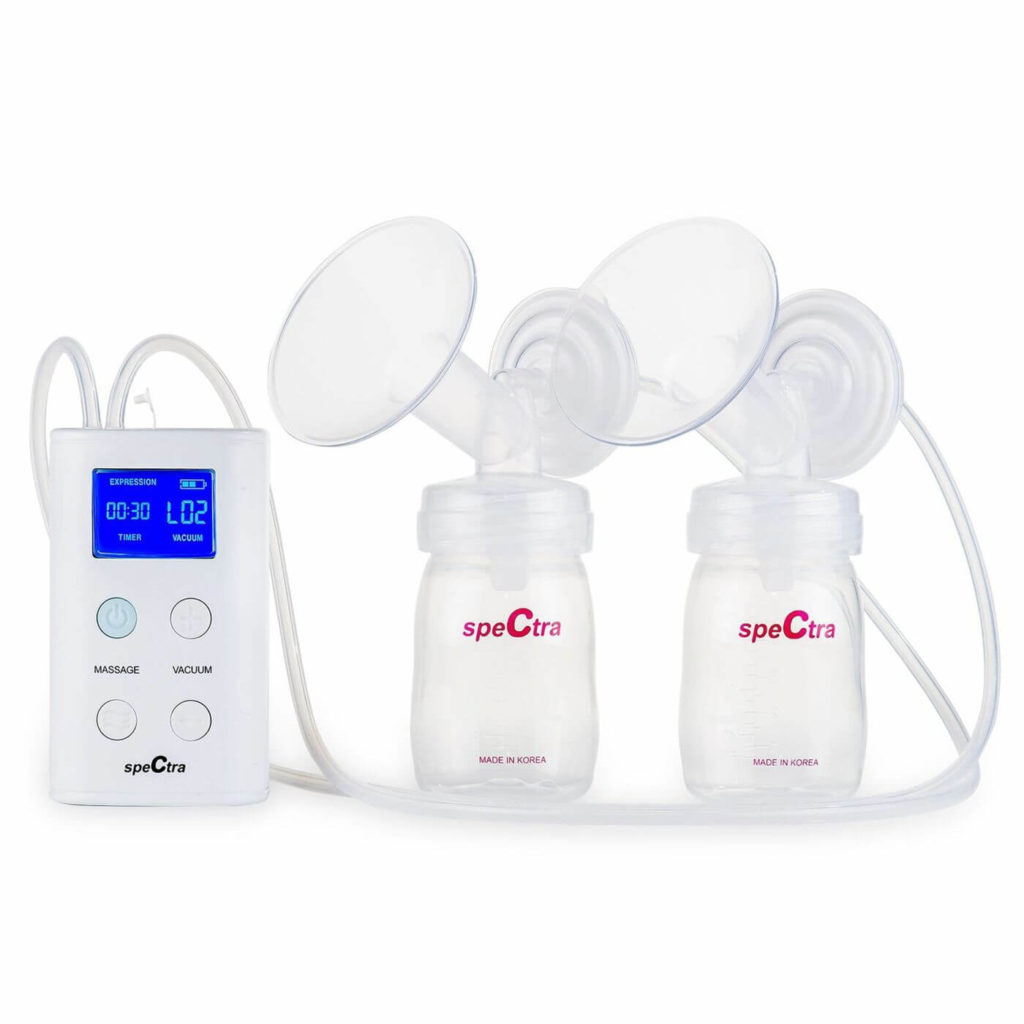

The 9Plus is cordless and rechargeable; it weighs about 1/2 pound and is roughly the size of a passport. You can fit it in your back pocket easily and — with a pumping bra — walk around, do work, make dinner, etc. Spectra’s in-house lactation consultants tell us it’s best for moms who already have an established milk supply and want something for on-the-go and/or travel. If you know you like Spectra pumps and want something portable as a secondary pump, this might be a great fit.
Ameda Mya ~$257
The Mya is the newest pump out from Ameda. It’s small (~1/2 pound), wireless, and portable, with a rechargeable battery that’s supposed to last approximately 2 hours. But since some women say the Mya won’t quite make it that long, we do suggest keeping the power charger handy. In terms of noise, the Mya is quiet, but far from silent (users say they wouldn’t use it on a work call, for instance).
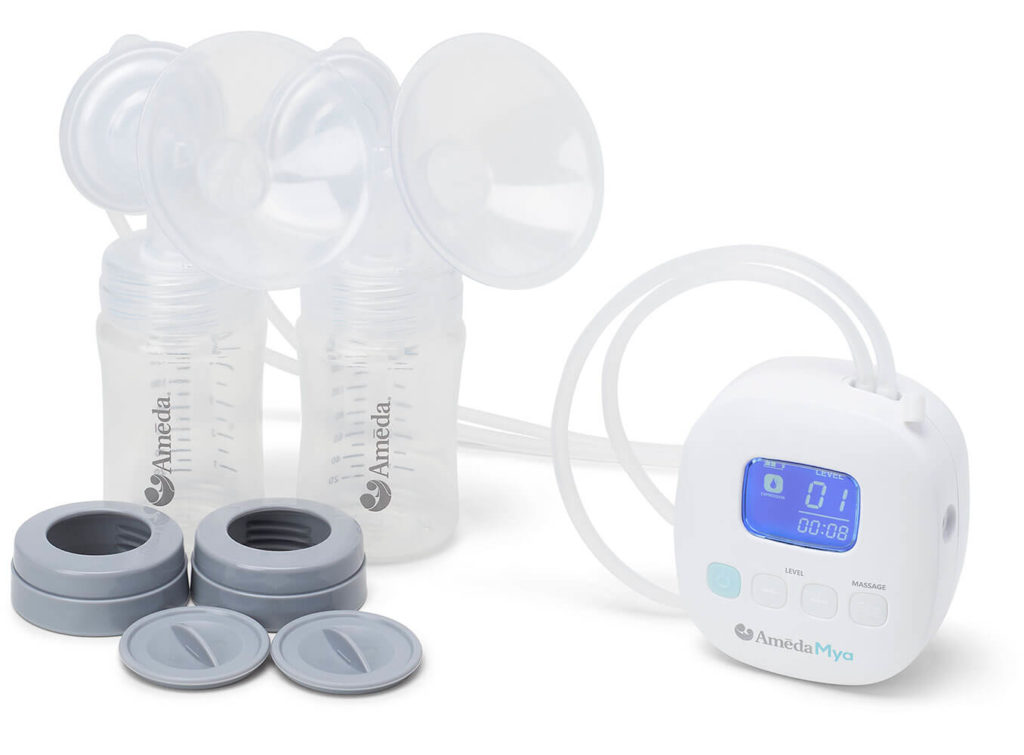
In terms of suction, the Mya is comparable to the Spectra (S1/S2), and tons of women love having the Mya as an accompanying pump to their Spectras or Medelas (although some do use it as a primary pump with great results). The LCD display shows your suction level (1-10 in expression mode) and also has a timer feature, with an auto-shut-off after 30 minutes.
Pumping moms say they wish that the Mya had a longer battery life and that it came with a belt clip, and some women dislike that the LED screen on the front is quite bright (and can’t be adjusted), especially in the middle of the night.
One other thing — the Mya is compatible with Spectra parts, and many women love using it with Freemie cups to enhance its mobility. Great idea.
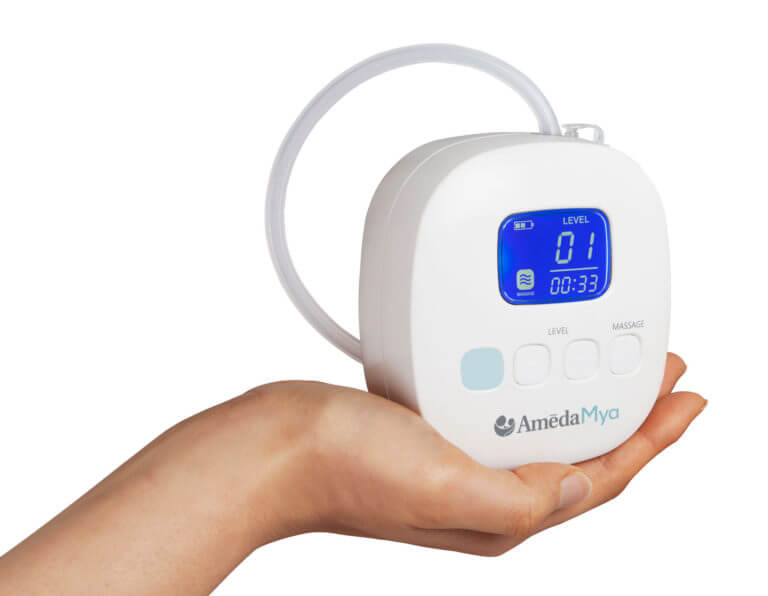

*Many insurers offer Ameda pumps, and this is hands down better than most of Ameda’s other pumps. In particular, we highly recommend the Mya over the Purely Yours, which frankly is pretty lackluster.
Baby Buddha ~$249 — Most Efficient
Readers have been writing to tell us how insanely awesome the Baby Buddha is, and we agree. It’s ultra-portable and ultra-efficient — power and speed are the name of the game.
Medela Freestyle Flex ~$325
Medela Sonata ~$329 — Most Comfortable
The Medela Sonata was the first smart pump we reviewed (in early 2017). With a smaller, quieter pump motor and a smart tracking app, it encapsulates some of the new developments in the pump world… but still falls into the traditional category. It has a decent battery life and is loved most for the comfort and ease factors. Note that most health insurance plans do not offer the Sonata on the menu of choices… but some do!
Niche
The lifestyle aims with this category are admirable: no more being hooked up to wires and mechanical contrivances fit for the likes of dairy cows; no more enduring hours planted in place near an electrical outlet; no more worrying about the ridiculously-loud sound of your pump broadcasting exactly what you’re doing to anyone within a 1.2-mile radius.
We’re on board with all this (really, we are) — and innovation counts for something. But in reality, these pumps, though they DO work well for many women, are not a slam dunk. Though advertised as completely freeing (with pics of women strolling around the neighborhood, typing away at the group desk in the office, and chatting at the coffee shop), that seems to be somewhat of an exaggeration. At the end of the day, these newfangled pumps can’t change the fact that it’s still breast pumping. We get as many readers writing to tell us that they hate the Willow/Elvie and want to throw the damn thing against the wall as that they love it and cherish it, yada yada. We think you should know this before you shell out the big bucks.
Keep in mind that if you’re a first-time mom, these may be trickier to get the hang of. And if you’re a seasoned pumper, they may be easier to get the hang of but tricky all the same just for being so different from your standard.
As with any benefit, there are trade offs…
Like this (please allow us this one final note on the nature of the “breast pump tech revolution”):
We think it’s fantastic that people are dedicating time and resources to improving breast pumps. But these little devices are not everything — renowned Harvard historian and writer Jill Lepore derided the modern breast pump as “the cheap way out” when it comes to supporting nursing moms.
As Lepore writes — many women stop breastfeeding when they return to work, and “there are three ways to bridge that gap: longer maternity leaves, on-site infant child care, and pumps. Much effort has been spent implementing option No. 3, the cheap way out.” Better ways to support breastfeeding moms, she suggests, would entail improved family leave policies, more flexible work opportunities, and universally available, high-quality, affordable child care.
We agree.
All that said — there are women who love these! If wearability is important to you, the technology is there for you to take advantage of. Here are your options:
Freemie Liberty ~$299 — Top Wearable Option on a Budget
The Freebie Liberty is a more budget-friendly wearable breast pump (roughly $200 cheaper than comparables like the Willow and the Elvie); we also love Freemie’s wearable collection cups, which you can purchase separately and rig up with (almost) any other pump you prefer.
The Elvie ~$499
Designed to “bring women’s technology out of the Dark Ages,” this new wearable pump is all about freedom — it’s wireless, rechargeable, portable, and hands-free — but it doesn’t 100% deliver.
Willow (Gen 3) ~$499
The Willow is the new(ish) kid on the block, but it’s already changing the game, so to speak. Like the Elvie, the Willow may be worth the splurge if discretion and portability are your top priorities.
Coming soon to a theater near you…
- The Babyation ($450) is marketed as a super-quiet, super-discreet pump. Instead of attaching collection bottles to your breasts, this pump allows for easy use under a shirt because the collection bottles are distanced from your breasts. Sounds pretty great. We’ll keep you posted.

3. Use a Manual Milk Pump
In addition to an electric pump (or, for infrequent pumpers, in lieu of an electric pump), I recommend a simple hand pump that you can throw in your bag when you’re leaving the house for a long period of time.
Yes, yes, I know, it seems archaic, but believe me — it comes in handy.
Here’s the scenario: you’re going to visit a friend for the day who lives an hour away. Your baby isn’t as hungry as usual and your breasts are getting really full. Uncomfortably so.
This is the situation I (as well as five of my mommy friends) experienced on a day trip to Napa when our babes were about 5-months-old. I was DYING and had forgotten my hand pump. It felt like someone had poured concrete on my right breast and allowed it to dry. That’s what it feels like to be engorged.
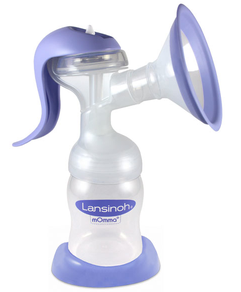
A manual pump is also a must-have convenience for airplane travel. Trust me, you do not want your giant Pump In Style cement-block-of-a-bag to be your sole carry-on item. You will have lots of other sh*t that you have to carry. And if you need to pump while flying, for example… it’s all good.
I have actually used my hand pump while on a car trip — because you (obviously) can’t breastfeed while the car is moving. So, just pump in the back seat and bottle-feed! This makes men-who-hate-to-stop very happy.
Honestly, after four years of pumping, I will tell you that you can indeed get a very strong suction from a handpump, and a nice long pull.
Personally, I think the Lansinoh Manual Pump is the best manual breast pump (because the shields are very comfortable), but really, any of them will do.
Pump Parts & Pieces

Admittedly, there are a lot of bits and pieces that go along with a pump. If you’re buying a new pump, all the accoutrements should come with it.
*Note: If you have one of the new-age wireless pumps, you’ll need to consult the brand for help with parts — this is more of a general overview and only applies to the more traditional (cough — older) pumps.
You may need to spend money on more shields (see below) to get you through the day, especially if you are Pumping At Work. If you’re borrowing or inheriting a second-hand pump, you may want to buy new tubing and breast shields, or just sterilize the ones you inherited. It’s fine. Really.
Here’s what’s what:
The breast shield (above) goes over your nipple and funnels your milk into a bottle (or storage bag). It looks like a megaphone or a horn (it’s more fun to call it a horn, non?).
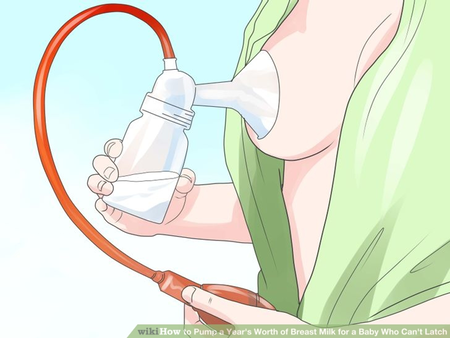
Your nipple goes into the horn and the flange creates a tight seal on your breast. You’ll want to have MANY of these on hand so you don’t have to run to the kitchen and wash them each time you need to pump again. OH — and, they come in five different sizes. It’s okay for them to be a little too big, but if they are too small, you will squeeze the bejesus out of your poor nipples. This can cause damage and pain, which you do. not. want. Plus, it can hinder your pumping outcome.
The default size is Medium (24 mm). This works fine for normal-sized nipples (and dainty English nipples). If you have big Italian pepperoni nipples, you need to get the larger horns (they come in 30 and 36 mm). If you’re not sure if your nipples are big or small, they are probably big.
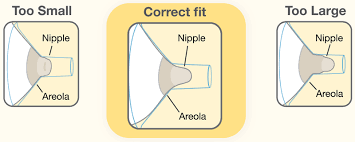
In between the bottle and the horn is a little white piece of plastic that acts like a valve. It keeps the milk flowing in one direction. If the valve is not in place, the pump will simply not work. Before you freak out when your pump isn’t working, always check to see the valve is in place. You can buy extra valves too because they get lost easily.
All non-wide mouth bottles should screw into whichever breastshields you buy, so you don’t need to buy special bottles for pumping unless specified. Ideally, you should pump directly into the bottle you are going to use to save on dish washing.
For an electric pump, there are two plastic tubes (or one tube, if you are using a single pump) that go from the housing and connect to the back of the shield (horn thingy).
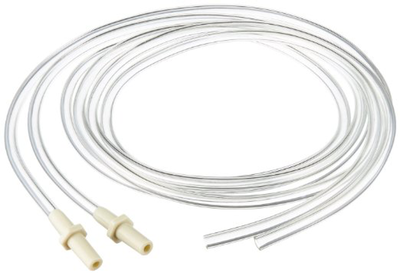
The air in these tubes creates the suction that expresses the milk. They don’t ever get wet or anything, they only carry air. You only need one pair and you can always buy replacements.
Nobody enjoys pumping, you guys. But isn’t it so cool that we can do it? Technology is so great.
Hello! I have been diving deep into the world of breast pumps for a while now, and I see the Ameda Mya Joy is more available on insurance covered sites than the Ameda Mya, though I can’t seem to find definitive comparisons between the two. Is there a reason the “just” Mya was chosen over Mya Joy? You only mention the “Purely Yours” as not being great. I’ve been looking at the Ameda site and it’s just hard to wrap my head around the minor detail differences! Thanks!!
My thoughts exactly! Please reply soon to settle the nerves of all the confused BF rookies. Thank you!!
I have a MayaJoy and it doesn’t charge. It is lightweight and on batteries. I will say I don’t like how it doesn’t remember my settings, and I have to replace batteries quite frequently because I can’t find an in car charger for it. Also, compared to my Medela it’s not very strong. I would not suggest it if this will be your only pump.
Hi, Rachel — I’m sorry about the delay in responding to this. The reason the Mya Joy is so much more available is actually because Ameda recently decided to discontinue the Mya. (We’ll be amending our review shortly to reflect this.) The Mya Joy is on a closed system and has stronger levels of suction, however it is not rechargeable (though it can function on 4 batteries for about 1.5 hours of pumping). If you can upgrade to the Mya Joy Plus, that unit is rechargeable.
Has the site looked or heard of the Limerick pump? I had only every heard about it from my cousin who is a midwife – it is pricey and likely not covered by insurance, but seems like it works differently than the standard spectra/medela and would be worth a review. I had been hoping this site would cover it.
Any thoughts on the Haakaa?
The Elvie Stride has been getting a lot of attention lately. How does it stack up to the baby Buddha as a portable option?
Would love a section added to this about how to stop breastfeeding! I am a twin mom and so very nervous about how to back off BFing when ready.
Marshelle — Hi there! We don’t have a comprehensive guide on this topic yet but we shared some strategies to get started with weaning in this post a couple of years ago — good luck!!
Any thoughts on the motif luna breast pump? Someone told me it was like the Spectra.
Is the Babyation review coming? It’s available for purchase now!
It’s on our list, Tara! Thanks!
LacTek has some very interesting pump parts that can turn upright pumping into lay down pumping and hard flanges into soft ones. I recommend you check them out!